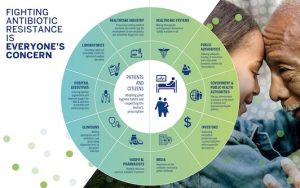Opinion | Patients Stunned by Their Medical Bills

To the Editor:
Re “It’s Just an X-Ray. How Much Could It Cost?,” by Danielle Ofri (Opinion guest essay, June 18):
As a retired cardiologist, I have been railing against facility fees for years. These are significant fees (sometimes thousands of dollars) added to your doctor’s typical charges when they are employed by a hospital system, as many are these days. The rationale from the hospital or health care system, as Dr. Ofri stated, is nonsense; it is simply a way to make more money.
It works like this: You see your private cardiologist in their office and have a stress test and get charged $500. If the next week the same cardiologist is employed by a hospital — same office, same phone number, same staff — the charge for the stress test is now $2,000. The $1,500 is tacked on as a facility fee.
For reasons that are not clear, many insurance companies as well as Medicare pay this fee completely. It is a perfect scam. The patient often does not know or care because insurance is paying. The doctor usually has no idea this additional fee is being added, and the hospital system pockets the money.
Michael Marek
Aspen, Colo.
To the Editor:
So-called “site-neutral” policies fail to recognize that not all sites of care are created equal. Current payment rates appropriately take into account that hospitals treat sicker, lower-income and more complex patients. They are also held to higher regulatory and safety standards, and provide unique benefits to their communities, such as 24/7 standby capacity for emergencies.
Facility fees allow a hospital to continue to provide services that only hospitals provide and for which they are not fully reimbursed, including burn units, critical care services and neonatal care. In fact, Medicare paid hospitals just 82 cents for every dollar spent caring for patients, resulting in nearly $100 billion in underpayments in 2022 alone.
In addition, hospitals bill according to federal regulations, which require them to clearly indicate where a service is provided and to provide a written notice to Medicare patients informing them of any potential financial liability before receiving care in an off-campus hospital outpatient department. Hospitals work with insurance companies and the federal government to implement policies that would give patients more meaningful estimates on costs in advance of receiving care.
Harmful payment cuts to hospitals would jeopardize access to services, especially for rural and other underserved communities. Patients and communities need hospitals to continue innovating and providing access to vital round-the-clock care.
Rick Pollack
Washington
The writer is president and C.E.O. of the American Hospital Association.
To the Editor:
I encountered this price escalation when I was referred by my local orthopedist’s in-office rehab therapy practice to one in another town where I would be staying for some time. The new practice was in a free-standing building, with a benefactor’s name attached.
I gave my insurance card to the receptionist. Imagine my surprise, like Dr. Danielle Ofri’s, when I received a bill in the hundreds of dollars for a 50-minute visit. I called the office and was told that it was a part of the local hospital. I asked why no one had relayed that.
Getting no satisfactory answer, I too escalated the issue until I got an administrator at the hospital. After discussion, she agreed to waive the facility fees, and reduced the bill to a level comparable to what I had been paying at home.
She was grateful that I brought this to her attention, as she said the staff should have informed me of the fees before I was seen, as they had been trained to do. She said she would use this situation as a teaching moment.
Whether this explanation was entirely truthful, I can’t say, but I was grateful for it, and that she accepted that I had no way to know the practice was hospital-affiliated if the staff didn’t tell me. I suspect that as more and more physician practices are acquired by hospitals, this loophole has exploded.
Thanks to Dr. Ofri for her push for legislation to get this fixed for us all.
Cheryl D. Angel
Summerfield, N.C.
The writer is a registered nurse.
The Wild West Near the Border
To the Editor:
Re “Biden Initiative on Immigration Shields 500,000” (front page, June 19):
President Biden’s executive action to help undocumented family members of U.S. citizens is long overdue, but Mr. President, don’t forget those of us who live along the U.S.-Mexico border. Our daily routine includes checkpoints, interrogations and trying to stay out of the way of Border Patrol agents who often practice “shoot first, ask questions later” policing.
Now even local ranchers are taking the law into their own hands, as evidenced by the recent murder trial (ended in a hung jury) of George Alan Kelly, who claimed to fire his AK-47 over the heads of a group of migrants who crossed his ranch near Nogales, Ariz. One migrant died from a shot in the back.
All of us who live near the border are at greater risk in this Wild West environment.
Richard Boren
Nogales, Ariz.
The writer is a founder of Border Patrol Victims Network.
Worries About North Korea’s Weapons
Still, Russia is a member of the Missile Technology Control Regime and the Nuclear Suppliers Group, which oblige it not to undertake nuclear and missile transfers to North Korea.
Moreover, the United States has responded to North Korea’s intercontinental missile programs with missile defenses that, if enlarged so that they can intercept a sizable number of Russian strategic missiles, could undermine Moscow’s nuclear deterrent. This gives Moscow a strong strategic incentive not to assist, and to instead actively seek to limit, North Korea’s long-range missiles.
Restraints on such programs would reduce the need for expanded U.S. missile defenses, which would also help maintain U.S.-Russian strategic nuclear stability.
Dinshaw Mistry
Cincinnati
The writer is a professor of international affairs at the University of Cincinnati and the author of “Containing Missile Proliferation.”
Justin Timberlake’s Arrest
To the Editor:
I write with dismay in response to “Flurry of Drama in Sag Harbor” (Sunday Styles, June 23), about Justin Timberlake’s arrest in the Hamptons on a charge of driving while drunk.
The article, while including the particulars of Mr. Timberlake’s arrest, moves quickly to a lighthearted foray into the local community’s reaction to news coverage of the incident.
It would all be in good fun, of course, if not for the fact that, according to the Department of Transportation, each day in the U.S. an average of 37 people die because of drunken driving, for a total of more than 13,000 deaths in 2022.
Instead of sharing those sobering figures, we get a local diner’s perspective that the news coverage of the arrest was over the top because Mr. Timberlake had not gotten into an accident.
That badly misses the point and, with it, The Times badly missed an opportunity to turn a spotlight on the deadly seriousness of drunken driving.
Brad Snyder
Menlo Park, Calif.








